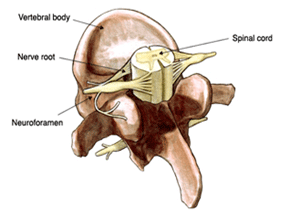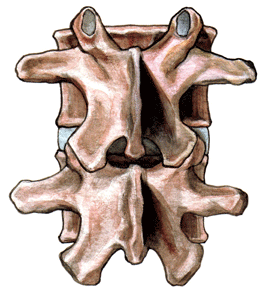Transforaminal Lumbar Interbody Fusion is a type of lumbar (lower back) spine surgery that combines one or more interbody devices (such as a cage) with bone graft to stimulate bony fusion. The neuroforamen are natural openings created between two vertebrae (Fig. 1).

Figure 1
The term bony fusion means new bone grows to join two or more vertebrae together. While interbody devices are used to fill the disc space after discectomy (or microdiscectomy), other spinal instrumentation may be included to increase spinal stability. Spinal instrumentation generally refers to different types of plates, rods and screws that secure or fix the spine in position.
Depending on your spinal disorder, the number of levels to be treated and other factors, surgery may be performed as an open approach or minimally invasive surgery (MIS). An open approach requires a long(er) incision and involves cutting through muscle and other soft tissues to gain access to the intervertebral disc(s). Minimally invasive surgery uses small incisions (some puncture-like) and specialized equipment such as dilatational devices to gently separate muscle and soft tissue. Your surgeon will explain what your surgical procedure may involve and the intended benefits and possible risks and complications.
TLIF Procedure
The procedure uses image guidance and involves removing a facet joint (Fig. 2). Posterior to each vertebra are two facet joints. A partial or complete facetectomy is performed on either the right or left facet joint during the procedure. This allows visualization and removal of the intervertebral disc.

Figure 2
After discectomy, one or two interbody devices (such as cages) are filled with bone graft and implanted in the empty disc space. More bone graft is packed around the interbody device. TLIF involves posterior fusion and the use of spinal instrumentation to provide spinal support and stability.
Potential Benefits, Risks and Complications
- MIS TLIF reduces trauma to the spine's muscles by allowing them to be separated and not cut.
- TLIF requires less retraction of the nerve roots, limiting the potential for nerve root injury.
We Can Help You Make Informed Decisions
Spine surgery is an important decision. While the final decision is yours to make, the benefits and potential risks and complications require careful consideration. We look forward to answering your questions and helping you to resolve your concerns about any treatment offered by Piedmont Spine Center.